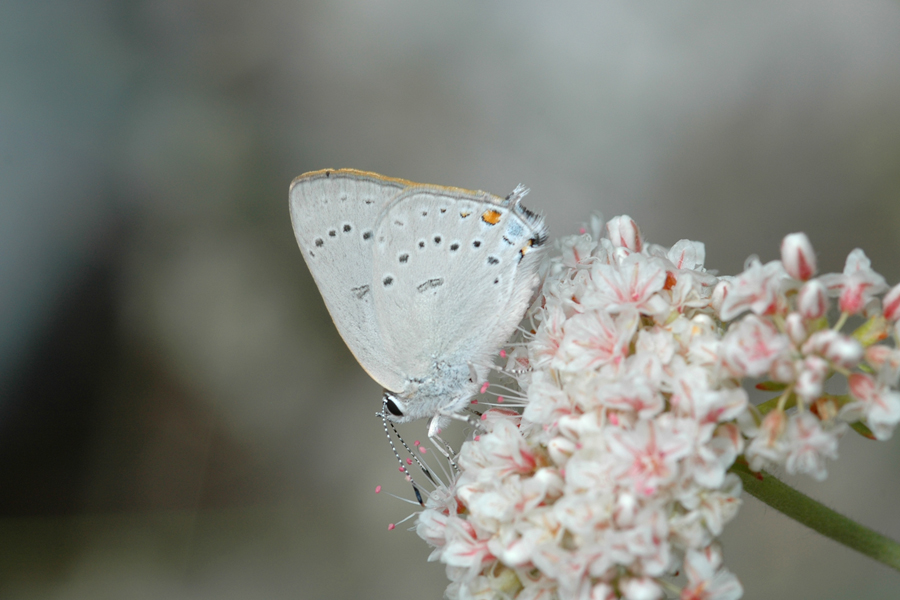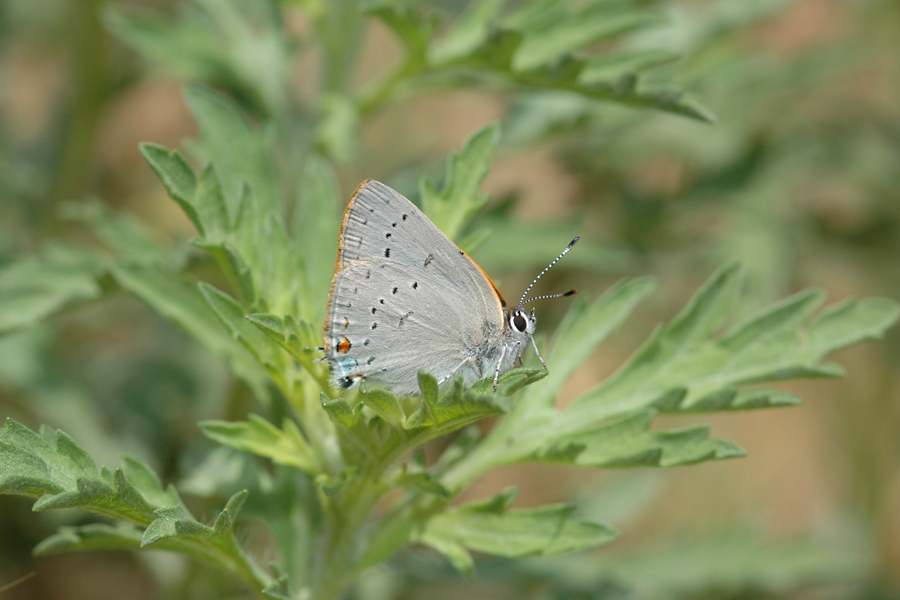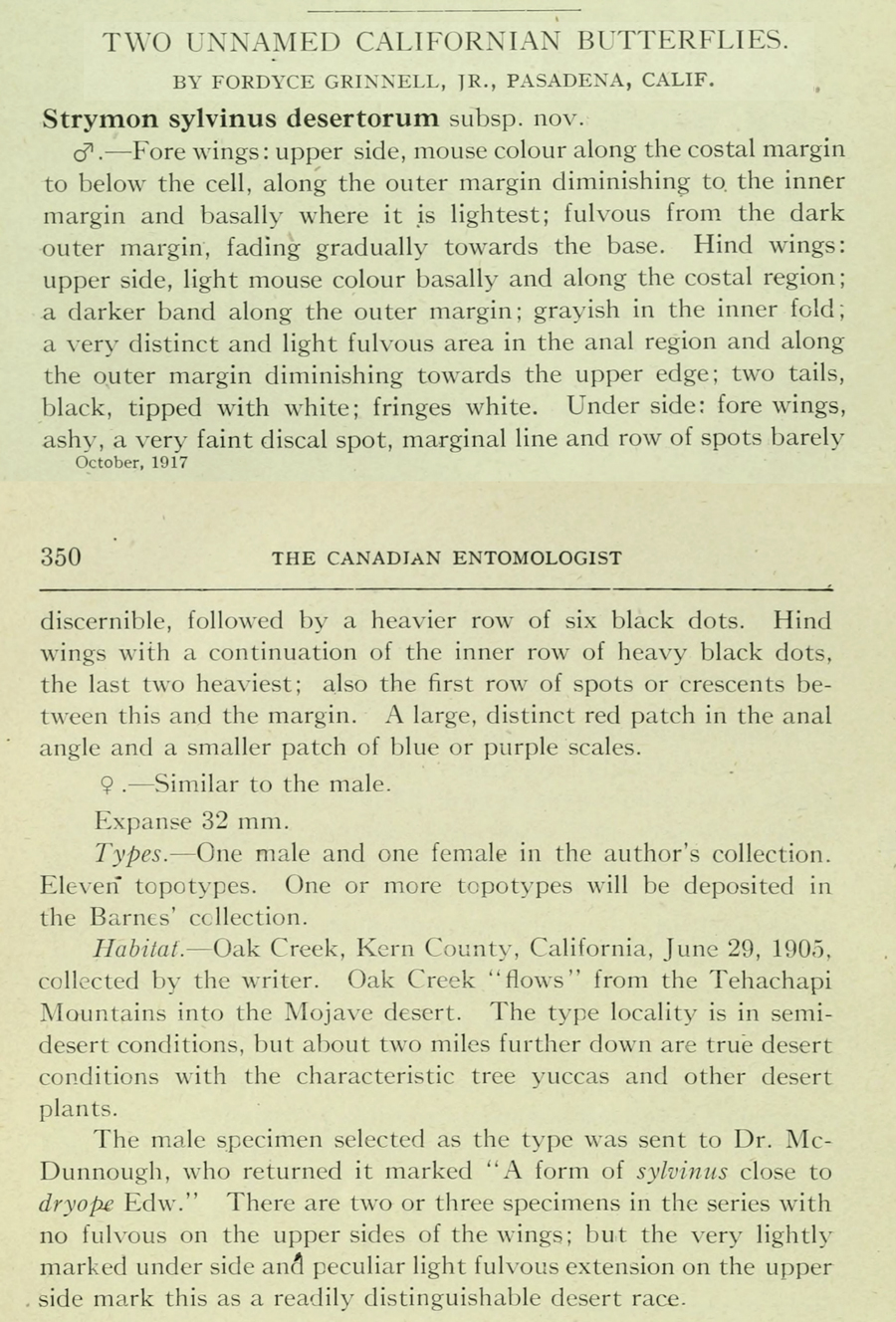Satyrium dryope desertorum
Sylvan Hairstreak
This species flies from approximately May to August in a single brood in habitats where the host willows thrive. In Allen, Brock, and Glassberg's Caterpillars in the Field and Garden, they say (p.56) the larvae can be found from April to July, and the eggs hatch as the willow buds appear. A 2022 paper found that populations of Satyrium sylvinus from the northwest and the southeast were as different from each other as they were from S. californica. Therefore, they split sylvinus into two, with dryope moving from subspecies status to a full species to represent the southern group. Subspecies desertorum should - I believe - cover the southern California sylvan hairstreaks.
The type locality of desertorum - Oak Creek - is in the Tehachapis a few miles west of the town of Mojave. The Pacific Crest Trail runs along Oak Creek for several miles. It would have looked very different in 1905 when the types were collected; today the ridgeline is dominated by wind turbines.


